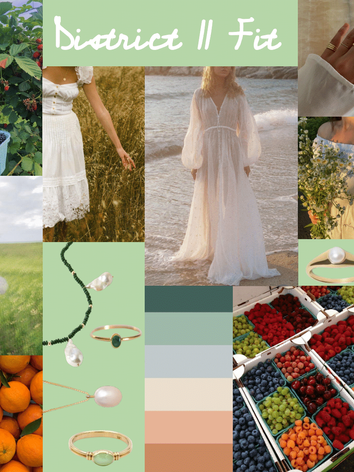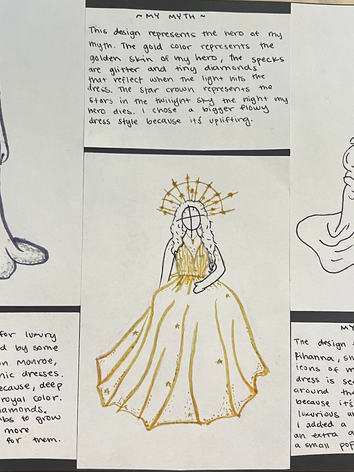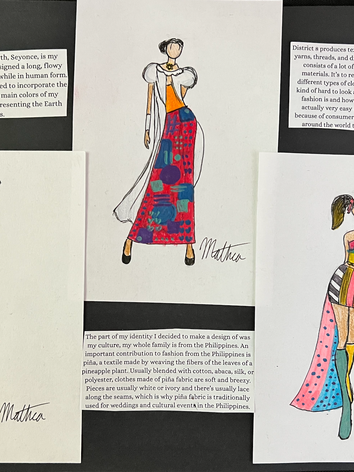
Patricia Forg
English Teacher
10th Grade Humanities
May the Odds
I. Launch
.jpg)
The Hunger Games is a franchise that rings through history and the present day, forcing readers to look at the world around them with a critical eye. It has been a talking point as we see small and large scale rebellions in our own world against our own unjust society. Its effectiveness as social commentary has scared even some of the most influential leaders around the world, earning its place in a list of banned books, even in the United States.
This is how I introduced The Hunger Games to a class of 15-year-olds who have been aware of its existence and popularity for as long as they've been aware of most things. It can be hard to feel excited about engaging deeply with a piece of literature when that literature feels like a book you've read a hundred times – so it became my task to convince them that this was worth the brain power I was asking them to use. What had the most impact on them were the stories in which The Hunger Games was used as a force of change and a trigger for government intervention.
We talked first about the unrest that took place in 2014 in Ferguson, Missouri, following the murder of a black man named Michael Brown by a police officer. In the midst of these protests and the militarized response by the government, a quote from the book as well as one of the films (which was released shortly before the second wave of Ferguson's unrest) appeared on a local monument. Within hours the graffiti was painted over.
That same month, the three-fingered-salute that represents rebellion in the book was adopted by protesters in Thailand in response to a military coup. As the symbol became more popular among protesters, those who used it faced arrest. Most theaters in Thailand banned the film, and China delayed the films release indefinitely.
Students had three weeks to read the book, which was split into three equal sections. As students read, they filled out a "reading journal". They summarized each chapter in four sentences, and at the end of each of the three sections, they responded to two guiding questions of their choice. These guiding questions are designed to ask them to engage with the thoughts they have developed as they read.
After each section was read, students were placed into book club groups. As a group, they had five minutes to discuss their thoughts (whether they like the book or not, why, etc.), before spending ten minutes discussing their answers to the guiding questions from their reading journal. The final ten minutes they discussed a more broad guiding question posed to them on the day of book club.
Students had three weeks to read the book, which was split into three equal sections. As students read, they filled out a "reading journal". They summarized each chapter in four sentences, and at the end of each of the three sections, they responded to two guiding questions of their choice. These guiding questions are designed to ask them to engage with the thoughts they have developed as they read.
After each section was read, students were placed into book club groups. As a group, they had five minutes to discuss their thoughts (whether they like the book or not, why, etc.), before spending ten minutes discussing their answers to the guiding questions from their reading journal. The final ten minutes they discussed a more broad guiding question posed to them on the day of book club.
At the completion of the book, students worked in groups to answer a unique guiding question that asked them to reflect on the novel at large. Students summarized these discussions in a slide or a series of slides that were then presented to the class.
II. Literary Analysis

III. independent research & Sustainability awareness

While reading the book, students made real-world connections with the text. An over-arching theme in the books is that of resource management, which is shown in the form of differentiated districts. There are 13 Districts, each responsible for a specific resource necessary for the survival of society. Students were briefly introduced to each of these industries with basic information and a note about their environmental impacts and environmentally responsible alternatives. For example, District 1 is a provider of "luxury items", which was narrowed into diamonds for class. Students learned briefly about the diamond industry, what blood diamonds were, and environmentally and morally responsible alternatives, such as moissanite.
After these brief introductions, small groups were randomly assigned to one of the thirteen districts and were provided with three articles that provided in-depth information about their industries in the real world. Using these articles, and any information they found independently, students created a slide that they would present to the rest of the class, broadening the scope of our knowledge of each industry. Students put a specific focus on furthering our understanding of each industry's environmental impacts and exploring multiple sustainable alternatives.
Students were then able to select which district industry they wanted to learn more about, and they continued their research to inform their work moving forward. Students were encouraged to select an industry they were either personally interested in or that connected to a myth they wrote as part of a larger unit. At this point, their research were focused on sustainability and environmental responsibility.
The Hunger Games series at large is a story about protest and rebellion against an oppressive government regime. The first book only touches on the depth of this, and a specific focus goes to the role fashion plays on the rebellion. Fashion has been a form of protest in the real world for decades, from the Civil Rights movement to the modern Black Lives Matter movement. Protest fashion can come in many forms; a jarring example can be seen in the What were you wearing? art exhibit.
We used Katniss' clothing in The Hunger Games to explore real, modern protest fashion, which introduced students to the next part of their project. Students were asked to create three fashion designs that fell under three categories: their own culture, their selected district, and their myth. The outfits inspired by their district were to include some aspect representative of what they learned about its environmental impacts or environmentally responsible alternatives.
IV. protest fashion


































